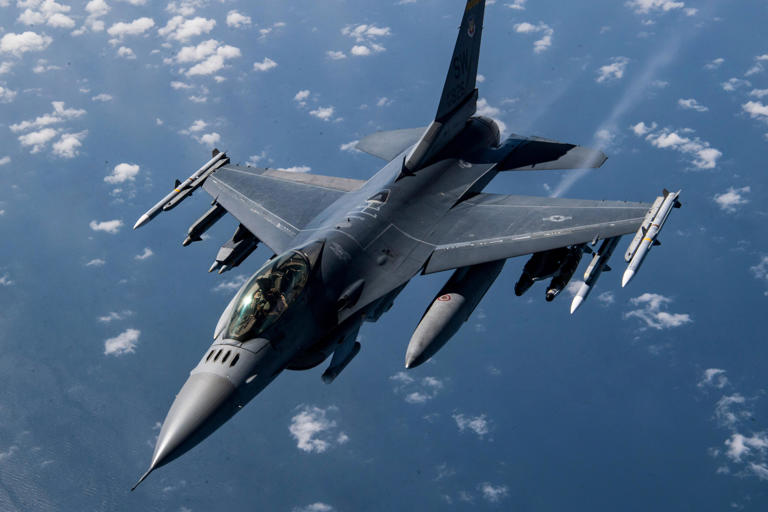Ukraine is set to receive its first-ever airborne control and surveillance aircraft from Sweden, a move experts believe will boost the effectiveness of its promised F-16s and challenge Russia’s air superiority.
Late last month, Sweden announced it would provide Ukraine with two ASC 890 airborne control and surveillance aircraft. These advanced aircraft act as command centers in the sky, capable of detecting enemy aircraft, missiles, and drones from a distance and coordinating defensive responses.
This capability is a first for Ukraine, which has previously lacked such advanced airborne early warning systems. Until now, this advantage has been predominantly held by Russia with its larger and more modern air force.
Tim Robinson, a military aviation specialist at the UK’s Royal Aeronautical Society, highlighted the transformative impact of these aircraft. “The Swedish aircraft, linked with the F-16s, will be a game changer in terms of situational awareness and the live radar picture,” Robinson told Business Insider.
“They will provide the Ukrainians with earlier warning of incoming drone and missile strikes, offering a huge strategic advantage.” Sweden’s defense minister, Pal Jonson, emphasized that these aircraft will “complement and reinforce the F-16 systems,” enhancing their operational effectiveness.
Mark Cancian, a retired Marine Corps colonel and defense strategy expert at the Center for Strategic and International Studies, noted the strategic value of the ASC 890s.
“They can see much further and help direct aircraft towards the greatest threats,” he said. Peter Layton, a fellow at the Griffith Asia Institute and a former Royal Australian Air Force officer, added that these aircraft would greatly improve coordination and command and control for Ukraine’s fighter jets.
Despite their strategic importance, such aircraft remain highly vulnerable. Russia, which has been using its A-50 Airborne Early Warning & Control aircraft to monitor Ukrainian airspace, has already lost two of these aircraft to Ukrainian attacks earlier this year.
These losses underline the vulnerability of such aircraft to missile and fighter aircraft attacks. “These aircraft are very vulnerable to fighter aircraft and missile attacks,” Layton stated. “In war, everybody wants to kill the early warning aircraft.”
Given their complexity and value, experts suggest that Ukraine will likely keep these command planes at a safe distance to maximize their radar detection capabilities while minimizing exposure to Russian attacks. Similarly, the initial batch of F-16s, expected to arrive this summer, will likely be deployed conservatively to protect key infrastructure and cities.
Ukraine has been promised approximately 85 F-16 jets from Denmark, the Netherlands, Norway, and Belgium, though the number arriving in the first wave remains uncertain.
While these jets alone are unlikely to change the war’s course dramatically, they will play a crucial role in replenishing aircraft losses, intercepting Russian drones and missiles, and potentially launching targeted attacks on Russian-held territories.
“Whenever they arrive, that’s a good time for Ukraine,” Cancian remarked, underscoring the importance of these new capabilities in Ukraine’s ongoing defense efforts.



